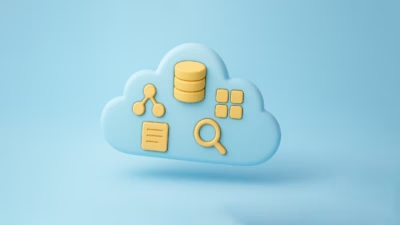It started with a headline. One of those bold, all-caps doomsday declarations: “AI Will Replace Analyst Jobs by 2025!“ My brain short-circuited. My coffee? Instantly forgotten. Five tabs and a mild identity crisis later, I was deep into Googling “future-proof tech jobs” like my life depended on it.
But here’s the thing: two years later, I’m not obsolete. Actually, I’m doing some of the most exciting work of my life—and I’m using AI tools almost every day. So if you’re feeling that knot of anxiety in your gut about the robots coming for your job, breathe. Then lean in, because I’m gonna show you exactly how to turn AI from a threat into your secret weapon.
Let’s dive in.
The Real Threat Isn’t AI — It’s Standing Still
Picture this: you’re working on a data project, pulling messy CSVs from five different sources. You spend hours cleaning, merging, fixing date formats (don’t even get me started on time zones), and by the time you’re ready to analyze, you’re already exhausted.
Now, imagine if an AI could automate 80% of that slog, and you could jump straight into the juicy parts—uncovering insights, telling stories, making decisions. Sounds amazing, right?
Here’s the catch: if you don’t start using those AI tools, someone else will. And they’ll move faster, deliver sharper insights, and become the go-to person. The real threat isn’t AI replacing you—it’s another analyst with AI replacing you.
Quick tip: Start by spotting the tasks you dread the most. Chances are, there’s already an AI that can do them (or at least take the first crack at it).
Mastering the AI Basics: No PhD Required
You don’t need to code a neural network from scratch to survive this shift. Honestly, if you can handle a VLOOKUP and a basic SQL join, you’re already halfway there.
Here’s what you really need: curiosity and a little experimentation. Most AI tools built for data analysts today are designed to help, not confuse. They’re like Excel’s smarter, faster cousins.
Some tools you’ll want to cozy up to:
- ChatGPT or Gemini: Draft SQL queries, brainstorm analysis approaches, debug Python scripts, and even summarize reports.
- Code interpreters (like ChatGPT Advanced Data Analysis): Drop in a dataset and have it clean, chart, and analyze the whole thing for you.
- AutoML tools (like Google AutoML, DataRobot): Build predictive models without needing to fine-tune every hyperparameter manually.
- Visualization assistants (like Tableau Pulse or Power BI’s Copilot): Generate dashboards almost conversationally.
The first time I asked ChatGPT to optimize a messy SQL query I’d been wrangling for an hour… and it did it in 15 seconds? I just sat there blinking at my screen, equal parts amazed and slightly offended.
Quick tip: Pick one tool this week and spend just 30 minutes playing with it. No pressure, no project. Just get your hands dirty.
Becoming an “AI-Enhanced” Analyst: What It Looks Like in Practice
Okay, storytime.
Last month, a client handed me a giant, gnarly dataset with a vague ask: “Can you tell us what’s interesting here?” (Classic.) Normally, I’d have spent half a day just cleaning columns and making pivot tables to start seeing patterns.
Instead, I fed the raw data into a code interpreter AI. Within minutes, it pointed out a handful of anomalies, suggested a few interesting metrics to track, and even drafted a basic executive summary. I didn’t just deliver the project faster—I had time to dig deeper, ask smarter questions, and deliver insights that surprised the client.
Here’s what being an AI-Enhanced Analyst actually looks like:
- Idea generation: Use AI to brainstorm hypotheses or alternate analysis angles you hadn’t considered.
- Data wrangling: Automate the repetitive stuff—cleaning, formatting, feature engineering.
- Rapid prototyping: Test models or visualizations in hours instead of days.
- Communication: Draft initial reports, generate data summaries, and even tailor presentations based on audience needs.
Quick tip: Think of AI like a junior analyst you can delegate to—not someone replacing you, but someone doing the grunt work so you can focus on strategy and storytelling.
The Mindsets That Will Make (or Break) You
If you take one thing from this entire article, let it be this: AI doesn’t replace human judgment. It amplifies it.
Sure, an AI can tell you that sales dipped 12% last quarter. But it won’t know that the dip happened right after a major competitor launched a copycat product, or that a freak snowstorm hit your shipping centers. You bring that context, that intuition, that ability to connect the dots.
Here are the mindsets that’ll keep you not just employed, but thriving:
- Curiosity > Comfort: Be endlessly curious. Explore new tools even if they’re clunky or confusing at first.
- Adaptability > Expertise: It’s not about being the world’s best coder. It’s about being willing to pivot when a better tool or process shows up.
- Storytelling > Stats: Insights are useless unless they move people to action. Get good at explaining your findings simply, clearly, and compellingly.
Honestly, I’ve started thinking of AI like the ultimate assistant. It’s fast, a little literal, and needs careful instructions. But once you learn to guide it? You become a superhero.
Quick tip: Every time you finish a project, ask yourself: “Could I have used AI to do this better or faster?” Even small tweaks add up.
Wrapping It Up: Your Job Is Safe—If You Evolve
I’ll leave you with this: The data analysts who are in danger aren’t the ones who are bad at their jobs. They’re the ones who refuse to evolve. The ones clinging to their favorite manual workflows like a toddler with a security blanket.
You don’t need to become an AI engineer. You just need to become a better analyst—faster, more creative, more valuable. AI can help you get there if you let it.
So next time you see another doom-and-gloom article about AI replacing analysts, smile a little. Then get back to building your AI-boosted toolkit, one tool, one project, one experiment at a time.
The future’s not scary. It’s freaking exciting.
TL;DR:
AI won’t steal your job unless you ignore it. Embrace it as your new sidekick: automate the boring stuff, dig deeper into the fun stuff, and keep sharpening your judgment and storytelling chops. Be curious, be scrappy, and you’ll not just survive—you’ll crush it.





